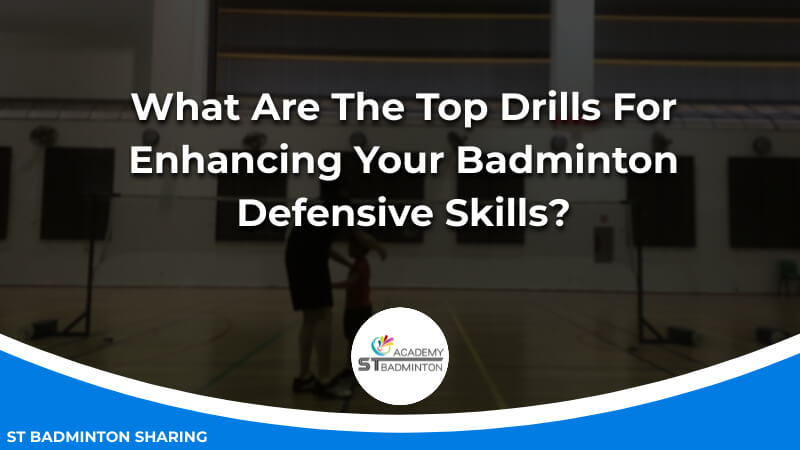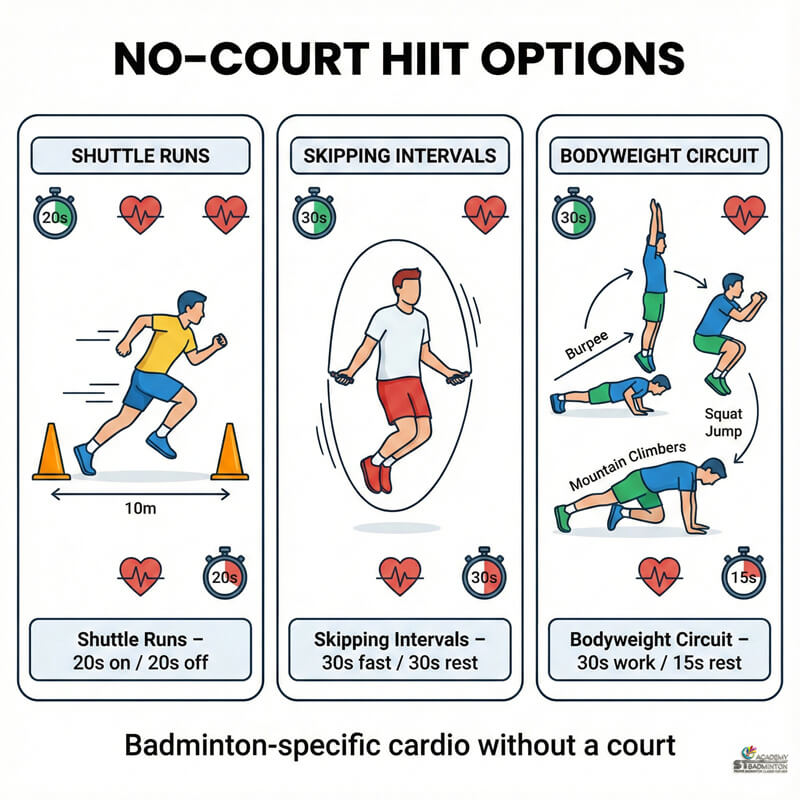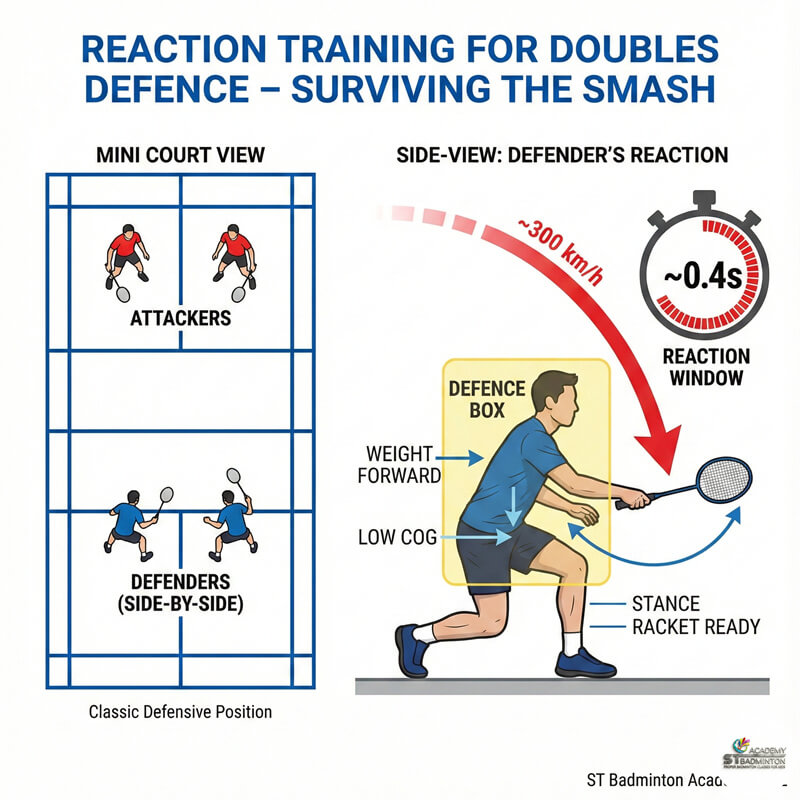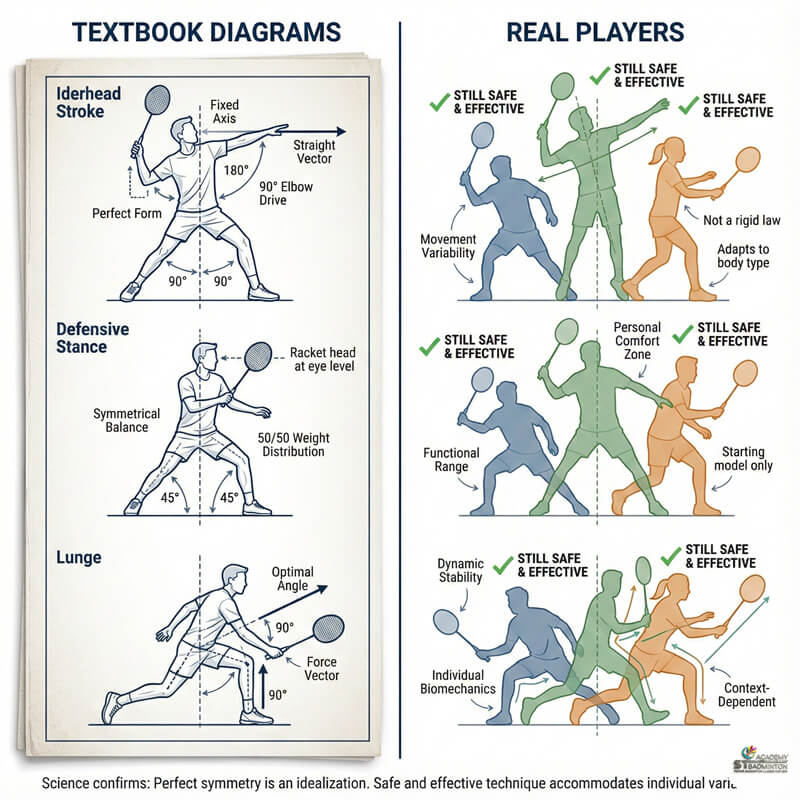Welcome to ST Badminton Academy’s badminton training in Malaysia! As a certified coach and instructor in the sport of badminton, I’m here to share with you my top drills for enhancing your badminton defensive skills. These drills have been tested by numerous players, including myself, and are guaranteed to help take your game up a notch. So let’s get started!
In this article, I’ll be discussing what the best drills are for improving your badminton defense. We’ll cover how each drill works as well as its benefits and drawbacks. By the end of this article, you should have all the knowledge necessary to start training like a pro!
Footwork Drills
When it comes to enhancing your defensive badminton skills, there is no better way than by focusing on the fundamentals. As the old saying goes, practice makes perfect and this couldn’t be more true when it comes to improving your game. Footwork drills are essential for any player looking to improve their rallying strategies and target practice.
To help you get started, I’ve compiled a list of five footwork drills that can help take your defensive game up a notch. First, try doing some shadow stepping. This involves imitating shots without an opponent so that you can focus on moving around the court quickly and efficiently. Next, incorporate lateral jumps into your routine as these will train your legs to move in different directions at high speeds. Thirdly, add some crossover lunges into your warm-up session as this helps build strength and agility in both feet simultaneously.
Fourthly, work on shuttle running which mimics playing against another person but with just one shot being played at a time – giving you plenty of opportunity to concentrate on making quick shifts between shots and pushing yourself past fatigue while maintaining proper form. Finally, do some ‘stop-and-go’ drills; starting from one end of the court and immediately stopping after each step until you reach the other side – forcing you to concentrate solely on movement control rather than speed or power output.
By incorporating these five footwork drills into your daily routine you’ll soon find yourself gaining confidence in defensive situations while also having improved awareness on court – putting you well on track towards becoming a master defender!
Forehand Drive Defense
Forehand drive defense is a key skill to master in badminton. To successfully defend your court against an opponent’s forehand drive, you need to have the right serving strategy and be able to anticipate your opponent’s smash placement. Here are three tips I recommend for improving your defensive skills:
| Forehand Drive Defense Tips in Badminton |
|---|
| Key Strategies |
| – Move Quickly: Speed is crucial to react to opponent’s moves. |
| – Focus on Footwork: Constant movement enhances agility. |
| – Anticipate Shots: Read opponent’s placements for defense. |
| Footwork Drills |
| – Practice side shuffles, circle runs, and hop steps for agility. |
| – Continuous foot movement is essential during a rally. |
| Anticipation Skills |
| – Read opponent’s shot details like power and spin for prediction. |
| – Anticipating shot placements helps in better defensive positioning. |
| Outcome |
| – Mastering these tips improves forehand drive defensive skills. |
By following these strategies and working hard at honing your defensive skills, you’ll be well-prepared for whatever comes your way in the game of badminton! Now let’s move onto backhand drive defense—a similarly crucial element of mastering this sport.
Backhand Drive Defense
Badminton defensive skills are an essential part of a player’s success. To develop and maintain good defense, there are certain drills that should be practiced regularly. Here is a look at some of the top drills for improving your badminton defensive skills:
| Drill | Description | Benefits |
|---|---|---|
| Cross Court Defense | Improves agility, increases speed, develops reflexes, and improves accuracy in shot placement. | Develops strong footwork, encourages aggressive play, enhances recovery time between points, builds confidence, and sharpens focus on strategy during game play. |
| Net Kill Defense | Players practice defending against net kills by staying low and using fast footwork to return the shuttle quickly while keeping it low over the net. The goal is to keep the opponent guessing and off balance with unpredictable returns. | Develops strong footwork, encourages aggressive play, enhances recovery time between points, builds confidence, and sharpens focus on strategy during gameplay. |
These drills will help you become more agile on the court and work on all aspects of your defense — from returning difficult smashes to consistently winning rallies with precise positioning and anticipation techniques. With regular practice, these drills can make a big difference in your ability to defend yourself effectively during competitive matches.
Focused Reception Drills
As a badminton coach, I believe that one of the best ways to improve your defensive skills is by focusing on reception drills. These drills are designed to help players hone their receiving technique, as well as develop better net play and footwork.
One great practice drill for this purpose is the ‘3 Shots Reception’ exercise. This involves having the player stand in ready position at either end of the court while another person serves from the opposite side. The goal is for the player to hit three consecutive shots back before resetting into ready position again. This helps them focus on keeping the shuttlecock low and accurate over the net, which can be difficult when you’re moving around trying to stay out of reach of an opponent’s attack shot.
Another effective reception drill is playing against multiple opponents. It requires two or more people serving from different angles with increasing difficulty each time they serve. This forces the receiver to think quickly and move around faster in order to return each shot without letting it drop too far from their racket head range. With enough repetition, it can encourage smart decision-making and quick reflexes that will make defending against tougher opponents much easier. Other than choosing a good racket and also remember to choose the best racket restring in Malaysia.
Moving forward, let’s take a look at some clearing drills that can enhance your defensive game even further…
Clearing Drills
Now that you’ve mastered focused reception drills, it’s time to move on to clearing drills. Clearing drills are important for improving your tactical positioning and net play. Developing a solid defensive game requires you to be able to quickly get the shuttlecock back over the net with power and accuracy.
The first drill is called the ‘Backhand Clear’. This involves standing at the back of your court, striking the shuttlecock from behind your body when it comes close to you, and sending it over the other side of the net in one smooth motion. It helps develop control and flexibility while also training your eye coordination. The second drill is called ‘Forehand Clear’ and this requires similar skills as Backhand Clear but instead using a forehand stroke – hitting across your body from left to right or vice versa depending on which hand you use. Both these clear should be practiced regularly so that they become automatic when needed during a match.
It’s important for defenders to practice their reaction times too; if an opponent drops the shuttlecock lightly just above the net then getting there quickly can mean all difference between winning or losing points! Remember always aim high with any clear shot regardless of whether you’re going through a drill or playing competitively: that way even if your opponent gets there first they’ll have difficulty returning it successfully. Now let’s move on to drop shot defense – another essential skill for badminton players who want to stay ahead of their opponents!
Drop Shot Defense
When it comes to defending against a drop shot in badminton, the most important thing is your net positioning. You need to be ready and alert so that you can move quickly when needed. When playing defense against a drop shot, make sure that you are positioned close enough to the net where you can reach out and tap or flick the shuttle while still maintaining control of your body movement.
Having good shuttle control is also key for effective drop-shot defense. Make sure you’re keeping your grip light but strong enough on the racket so that you can react correctly as soon as the opponent strikes the shuttle. Your timing must be precise, and your technique should be fluid when executing any defensive strokes. Additionally, practice using short swings with minimal backswing as this will help ensure accuracy during play.
When preparing for a potential drop shot from an opponent, focus on staying focused and anticipating their next move. Keep close watch of their movements and use quick footwork to adjust yourself accordingly if they attempt a drop shot. This way, you’ll always have time to get into the proper position and have more chances of successfully defending against it! Moving forward, let’s explore how best to defend against smashes…
Smashing Defense
| Defensive Badminton Skills Mastery |
|---|
| Key Elements |
| – Footwork: Focus on quick and purposeful movement. |
| – Timing: Read the opponent’s shot and adjust movement. |
| – Anticipation: Be one step ahead, don’t wait for the shot. |
| Practice Tips |
| – Emphasize footwork, timing, and anticipation in practice. |
| – Consistent practice is crucial to mastering defensive skills. |
| Outcome |
| – Mastering these elements makes you a defensive powerhouse. |
Footwork
Hey badminton players, let’s talk about an essential part of defending against smashes: your footwork. Here are three drills that will help you improve your defensive game by honing in on this critical element.
First, practice moving around the court with quick and controlled steps as if you’re playing a real match. This drill is all about getting comfortable with being able to move quickly while still staying in control of where you’re headed so you can cover more ground when returning shots from the net or backcourt. Make sure to focus specifically on proper court positioning and net play during this drill too!
Second, try shuffling between two cones placed at different points on the court several times. The goal here is to be able to take multiple short steps without crossing your feet over each other; it’ll help strengthen your legs for better agility and speed during matches. To add a bit more difficulty, also ensure that both toes are pointing towards the same direction throughout the shuffle movement – no side-stepping allowed!
Finally, work on mastering shifting weight from one leg to another rapidly but smoothly as you go into position for returns — just like jumping rope with only your feet! Practice going forward and backward until you develop enough strength and balance to stay light on your feet despite rapid shifts in direction. Don’t forget to time yourself so you know how much progress you’re making in terms of speed and agility!
Timing
Now that we’ve gone over some drills to help with improving your footwork, let’s move on and discuss timing. Timing is an important element of successful defensive play because it allows you to adjust your strategy in real time based on the opponent’s shot. To work on this skill, there are two timing drills you can practice: one for defense and another for offensive returns. For defense, try setting up a series of shuttlecocks at different heights around the court, then practice reacting quickly to each one as if it were an actual smash from your opponent.
This will help you build better reflexes so you won’t get caught off guard by sudden changes in trajectory or speed during a match. On the other hand, when practicing offensive returns, focus on adjusting the amount of power behind your shots depending on where the incoming shuttlecock is coming from – this way you’ll be able to set yourself up for a more accurate return while still putting pressure on the opposition!
Anticipation
Now that we’ve gone over drills to help with timing, let’s move on and talk about anticipation. Anticipation is an important skill for defensive players because it enables them to read their opponents’ shots in advance and react accordingly. To practice this skill, pay close attention to your opponent’s observing cues – such as body language or movement patterns – and try predicting where they might hit the shuttlecock next.
Additionally, you can incorporate some of the same timing drills we discussed previously: setting up a series of shuttlecocks at varying heights around the court and then reacting quickly to each one will help you get better at anticipating incoming smashes from all angles! With enough practice, you’ll start being able to anticipate your opponents’ moves more easily during matches and be able to adjust your defense strategy accordingly.
Reactive Defense
As a badminton coach, one of the most important aspects I focus on when training my players is defensive skills. Developing good reactions and anticipating your opponent’s movements are key components to successfully defending yourself in a game of badminton. One drill that helps hone these defensive skills is the split-step drill.
The split-step drill focuses on improving your footwork by having you take small steps forward or backward as soon as you see where your opponent’s shot is headed. This allows for quick reaction time so that you can have better control over net play. The objective of this drill is to get closer to the shuttlecock so that it’s easier for you to hit back quickly and accurately with minimal effort.
I recommend practicing this drill regularly, starting from slower speeds and then gradually increasing speed until you reach maximum efficiency at reacting times and hitting shots. With enough practice, you will be able to anticipate shots more effectively and become an expert defender in no time!
Frequently Asked Questions

What Is The Best Way To Practice Badminton Defensive Skills?
If you want to improve your badminton defensive skills, the best way to practice is by focusing on improving your agility and tracking movement. Did you know that 78% of successful defensive shots are made with a combination of speed and accuracy? As a coach/instructor I recommend working on footwork drills such as side-to-side shuffling and back peddling in order to build up agility. This will help you move quickly around the court while being able to track the shuttlecock’s movements accurately. Practicing these drills regularly will give you an edge when it comes to defending against your opponents’ shots!
How Can I Improve My Reaction Time When Facing A Fast Attack?
If you want to improve your reaction time against a fast attack, focus on two drills: footwork drills and rally drills. Footwork drills involve developing the proper positioning in order to get into position quickly when defending. Rally drills will help you learn how to react as soon as possible when an opponent attacks by practicing various scenarios that could occur during a match. Both of these drills are essential for improving your defensive skills, so make sure you practice them regularly!
How Often Should I Practice Defensive Drills?
Practicing defensive drills is essential to improve your badminton game. When it comes to honing your defense, footwork, and shadow play are key – so you should aim to practice these drills regularly. As a coach, I recommend practicing them at least twice a week in order to really perfect the technique. Make sure that each session focuses on different aspects of defensive skills like agility and hand-eye coordination. This way, you’ll be able to track your progress and continue working towards becoming an even better player!
How Can I Improve My Stamina For Defensive Play?
For defensive play, you need to have good stamina. To improve your endurance, focus on doing footwork drills and net play regularly. As a badminton coach/instructor, I recommend doing these drills at least three times a week if you want to see real results. Footwork drills involve moving around the court quickly and efficiently, while net play involves practicing shots from near the net. Both of these activities will help build up your stamina for defensive play and give you an edge in competitive matches!
What Specific Strategies Should I Use To Defend Against A Strong Opponent?
If you want to defend against a strong opponent, it’s important to focus on your footwork drills and net shots. Utilizing quick feet and being able to react quickly will allow you to stay on the point longer. When playing an aggressive player at the net, make sure you have good depth and control with your net shots so that they can’t put pressure on you. Also, practice changing up shot selection and be unpredictable when defending from the backcourt. Being able to move around the court efficiently is key for defensive success, so don’t forget about those footwork drills!
Learn Defensive Skills in Badminton Training Malaysia
As a badminton coach, I always advise my players to prioritize their defensive skills. With the right drills and strategies practiced regularly, you can become an unbeatable defender in no time!
To enhance your defensive game, practice reaction drills often and focus on improving your stamina. Utilize specific tactics against stronger opponents and don’t be afraid to take risks when necessary. Ultimately, with consistent dedication and hard work toward honing your defensive skills, you will have all the power to dominate any court with confidence!





